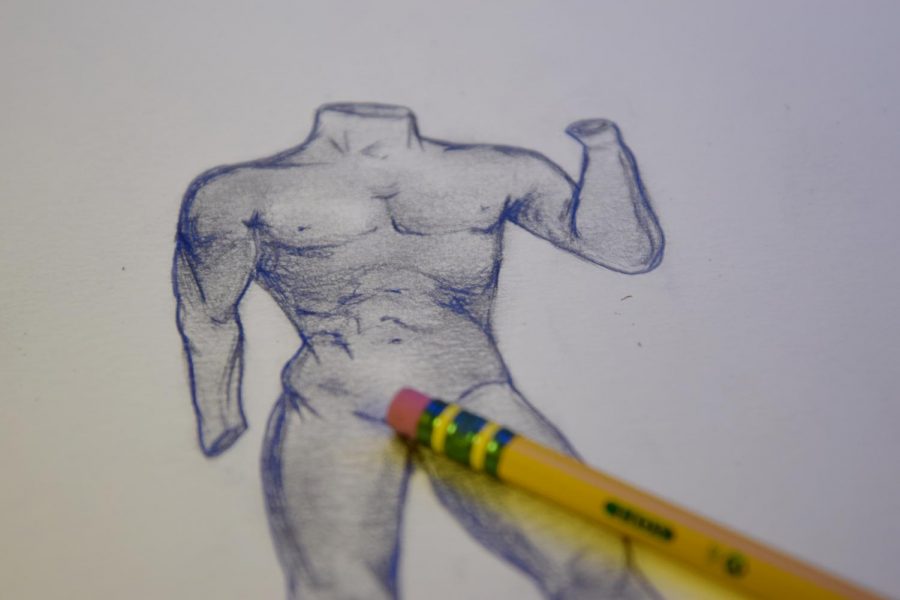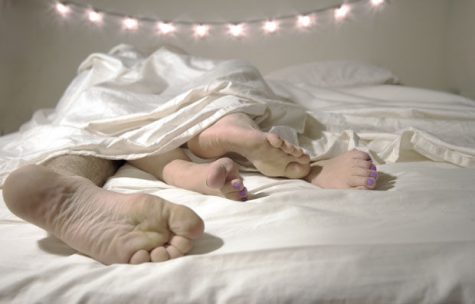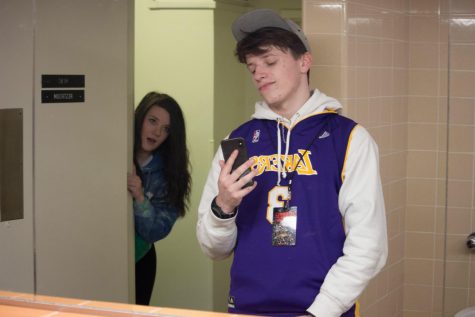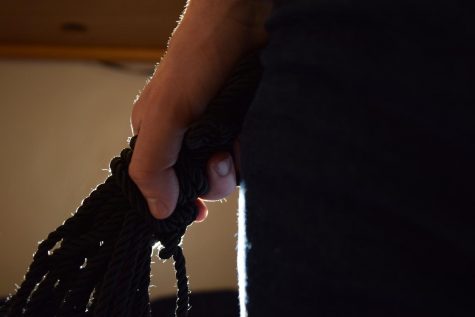Nudity plays an important role in art, personal identity
Human form has been important model piece of cultural history
JOSEPH GARDNER | EVERGREEN PHOTO ILLUSTRATION
The art of the nudity has been seen differently throughout cultures and generations. Joe Hedges discusses the difference in sexualized art of women and men and cultural shifts about the acceptance of nudity.
February 15, 2019
Nudity is a constant in our media today, from billboards to commercials to modern art. But it wasn’t always like that.
Joe Hedges, an assistant professor of painting and intermedia in WSU’s fine arts department, said it is fascinating to think about how cultural norms surrounding nudity have changed throughout the years.
Hedges said Michelangelo’s painting in the Sistine Chapel is among the most famous examples of nude paintings. This is something that even today would not go over very well in many churches.
“It’s in a church [and] sometimes I have to remind myself, ‘this is several hundred years ago and somebody decided to paint all the walls of the church with nude bodies,’ ” Hedges said.
He said people choose to paint and sculpt nude figures for a variety of reasons. The artist’s choice to show a subject wearing clothes, whether it is a contemporary coat or hat, places the subject at a particular time and place.
“Sometimes painting a nude figure is as simple as, you want that painting to feel timeless,” Hedges said.
Michael Holloman, an assistant professor of drawing and art history, said the human form has been idealized since the time of the Greeks and Romans. The human form and how it is represented has been one of the most important parts of culture and identity.
Hedges said in the arts, many people prefer the term nude as opposed to naked.
“For me, the word naked tends to imply or have slightly more negative connotations, and you see that reflected in metaphorical uses of that word too,” he said.
Hedges said that in critical art theory, the term “male gaze” is used to describe the way in which men tend to look at bodies as opposed to the way women see bodies.
He said there are more female nudes in art than male nudes. In the Metropolitan Museum of Art, there is a difference in terms of ratio, and there are feminist scholars who are trying to push back on that. There are also contemporary artists more interested in portraying the male nude.
“There is a difference. There are a lot of paintings of sexualized women and nude bodies and there are far less paintings of men in those situations,” Hedges said.
Hedges said one of the most well-known photographers of nudes was Robert Mapplethorpe. He had an exhibition in Cincinnati, Ohio that showcased photos of men in sexual positions. It was controversial, and people felt like it existed somewhere between fine art and pornography.
“That conversation is still kind of ongoing, but undoubtedly images like that of people being honest and open, or even celebratory about their private sexual lives have changed our history,” Hedges said.
Holloman said there have been questions and criticisms in academia in some ways about the portrayal of the human body.
“The ability to recognize the dynamics of the human form from anatomy to structure to expression — these things are of much importance to us as a department and also to students,” he said.
Hedges said nudity in the arts has seeped into the culture at large, as well into music videos or fashion photography.
“There’s this sort of ongoing exchange between culture and what people are willing to accept,” he said. “Artists are always looking to kind of push the envelope.”

















